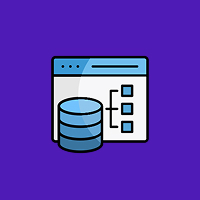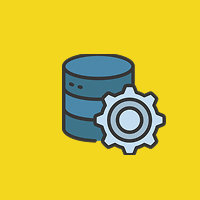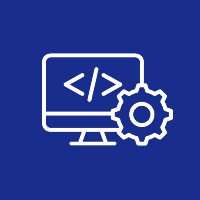One of the leading frameworks to build dynamic and high-performance web applications, Angular has been getting better with each release. With Angular 17 here, it accompanies a bouquet of new features and enhancements. All of these will be focusing on overall developer experience, improved performance, and workflow optimization. Let us jump right in and discuss what is new with Angular 17, the biggest updates, and what you can expect from this innovative framework going forward.
1. Better Performance with Ivy
Angular’s Ivy rendering engine has gotten better with more innovation, and Angular 17 keeps doing the same. Ivy improvements focus on optimizing the compilation and rendering performance that results in faster, more interactive user experiences. The optimizations translate to smaller bundle sizes, reduced load times, and better runtime performance, which are all necessitated in rendering faster, high-performance web apps. Angular’s improvements make it one of the top-performing frameworks for tiny projects and huge enterprise applications.
2. Strict Templates by Default
Perhaps the most impressive new feature in Angular 17 is improved type-checking of templates, which guarantees that developers identify bugs in templates during the development stage rather than at runtime. Bug identification at the development stage enables developers to reduce the prevalence of bugs and maximize the stability of the app. This is particularly helpful in large applications where the detection of errors early on can prevent wasting time and lead to costly runtime issues. With stricter templates, Angular offers a more deterministic and predictable development environment, which is of utmost importance in maintaining quality code.
3. Standalone Components in Angular
Standalone components were added to Angular 15, and Angular 17 enhances this feature even further. This components allow developers to declare and keep components independent of a parent Angular module. This makes the codebase cleaner and promotes writing modular, reusable components. In Angular 17, it is easier than ever before to take advantage of standalone components since the framework has furthered its support for them, and it is easier to work with. This feature promotes cleaner, easier-to-maintain code and more flexible development structure.
4. Improved Angular DevTools
Angular DevTools have also been extensively improved in Angular 17. Angular DevTools have been enhanced with better debugging capabilities like better performance profiling, better change tracking of components, and better error reporting. DevTools now gives developers a simpler way to audit and optimize applications in real time, and it is possible for them to tune performance and squish quicker. The enhanced debugging capabilities provide developers with more control over their Angular applications when they are in development mode, further making the product an even more useful tool for developing and maintaining high-complexity applications.
5. Improved Build System
Angular 17 has also witnessed the build system entirely revamped. The Angular CLI (Command Line Interface) now offers better build time, better caching, and better build configuration management. These are features that ease development, shorten application build and deploy time, and deliver the final product performance-optimized. Shorter build time benefits developers who have to iterate on a tight schedule because they can make changes without interruption. This enhancement is most useful in large projects with more intricate build processes where build time would be a developer bottleneck.
6. Improved TypeScript 5.x Support
Angular 17 directly supports TypeScript 5.x, which provides a wide range of improvements to developers. TypeScript 5.x provides stronger type inference, better error messages, and improved compilation time so that developers can write cleaner and maintainable code with ease. Along with increases in TypeScript development, there are more solid tooling support, reduced bugs, and an improved development experience for Angular developers. Together, Angular 17 and TypeScript 5.x bring all the tools required to develop sophisticated programs that have fewer bugs and better results.
7. Router Changes
Angular 17 comes with a set of changes to the Angular Router, making it more efficient and flexible. One of the biggest boosts is the enhanced support for lazy loading, allowing developers to load application components only when needed. This reduces the load time initially, and Angular apps are faster and more responsive. The router also has been streamlined to be simpler to implement and route, and thus navigation between applications is easier. These will help developers speed up the user experience with fast page loading and switching between app components.
8. More Complete and Current Documentation
Angular 17 also boasts a good concentration on improving its documentation. The second edition is packed with comprehensive, new information about every Angular feature, best practices, and use cases. It helps both newbies and experienced developers learn about Angular 17 and get the best out of its features. The new documentation also includes real-life examples and hints for troubleshooting faced problems while developing, providing worthwhile insights for optimization of development activities. With this entire suite of tools, developers can leverage the best of Angular 17’s capabilities and remain up to date with the newest additions and updates.
9. Deprecation of Legacy Features
Similar to any upgrade, Angular 17 deprecates several legacy features no longer efficient or compatible with modern development practices. This includes removing outdated tools and techniques replaced by more efficient ones. Though this will likely require developers to upgrade their codebases to be compatible, it also makes it easier to develop by reducing the complexity of the framework. Developers should shift to more modern, streamlined practices that align with the direction Angular is heading so they can build their apps with the best, high-performance tools available.
10. Future Expectations: The Path Forward
The future is bright with Angular 17 and positions us for more innovation. The Angular team continues to work on improving performance, tooling, and developer experience with each release. We can expect continued work on micro frontends, better SSR support, and greater integration with bleeding-edge UI frameworks and tools. The Angular team’s dedication to evolving the framework ensures it continues to meet the needs of modern web development. As a result, Angular will remain a solid and versatile option for building web applications. It will continue to support the development of high-performance, scalable applications for years to come.
Conclusion
Angular 17 is rich in interesting new features and improvements that will enhance developers and end-users. The better performance, better tooling, and focus on developer productivity make Angular 17 an upgrade that any developer who has been coding with Angular needs to do. With frequent updates, strict templates, isolated components, and better TypeScript support, Angular 17 provides the developers with all they need to create modern, high-performance apps. With each enhancement in the framework, Angular developers can expect more innovations that will make their process of creating complex web applications easier and faster.
Contact Us Today













 Database Development
Database Development












































